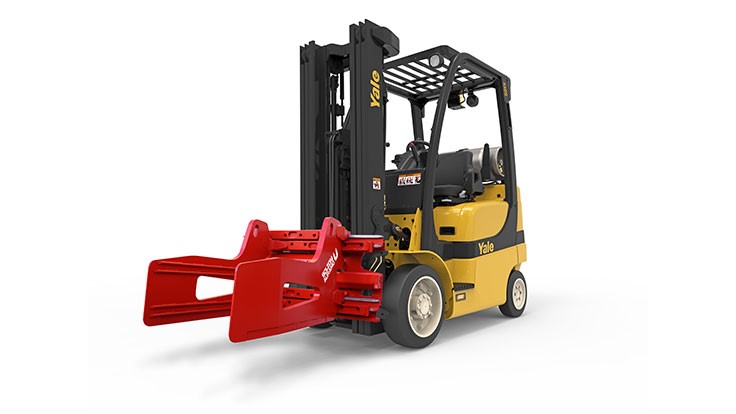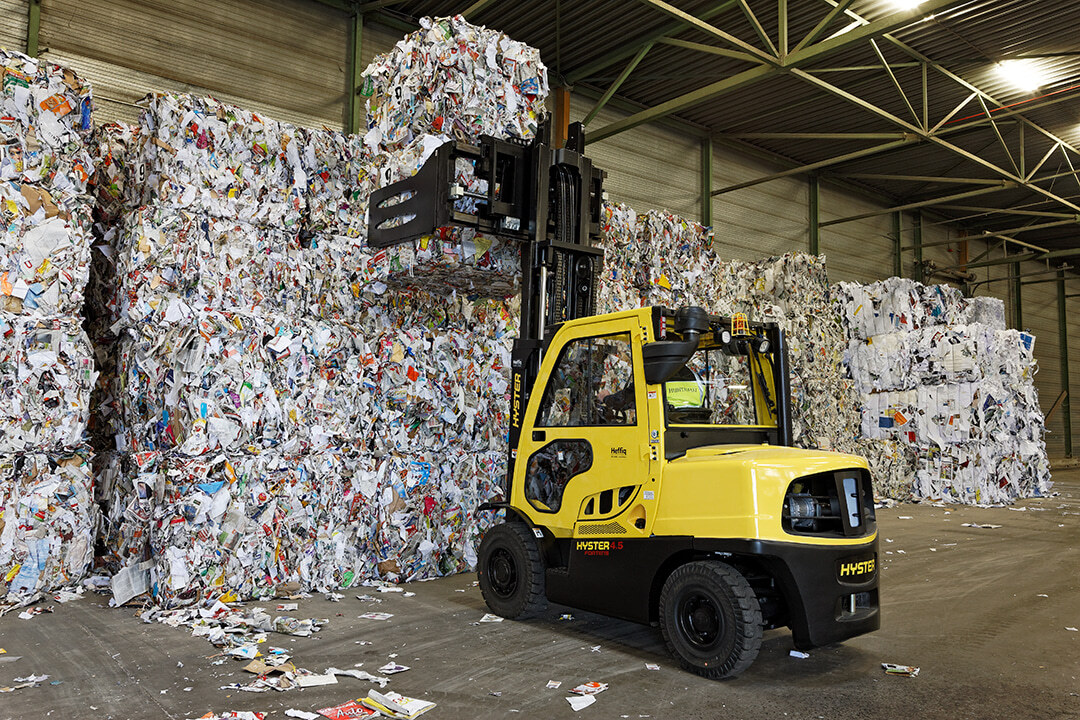Bale Clamp Forklift Attachment Benefits
Last week’s blog looked at forklift rotator attachments and the benefits they bring to the Agriculture, food, beverage and waste industries.
This week’s blog looks at another beneficial forklift attachment bale clamps and how they benefits industries in moving bales of product.
What is a forklift bale clamp attachment?
Forklift bale clamp attachments are fitted to a forklift mast in place of standard tynes and carriage.
The attachment is made up of two hydraulic clamps that can grip both sides of baled up products, whilst the attachments rear frame keeps the load in place during transit and lifting.

Common bale clamp applications
There are a wide variety of bale clamps manufactured for the safe lifting and transport of a wide variety of products and goods that can be utilised across multiple industries, these include:
- Agriculture
- Paper, recycling and packaging
- Wool
- Textile and synthetic materials manufacturing
Some common examples of how bale clamps assist the above industries are described below.
- Bale clamps can be used to carry almost any baled up product in farming and agriculture this may include bales of animal feed such as hay or raw materials such as cotton before and during processing
- Paper recycling and packaging manufacturers may use forklifts fitted with bale clamps to assist in the manoeuvring pulp bales during the recycling process or to dispose of baled up waste at the completion of processing
- Textile and synthetic materials manufacturers may also utilise bale clamps for easy movement of products in the manufacturing process or to assist with storage of finished goods
Benefits of bale clamp attachments
- Where multiple bales are stacked on top of each other the thin profile of a bale clamps arms allows them to easily knife through tightly compacted loads to allow the easy removal of bales this ability increases operational safety, efficiency and productivity
- Safety is increased as a forklift operator can directly pick-up a bale load even if it is tightly compacted meaning the operator/employee doesn’t need manually manoeuvre the potentially large and heavy load into a position beforehand so the clamp can grip the load. In some storage situations bales can be stack from floor to ceiling, the clamp eliminates the potential of employees having to climb onto bales where they can potentially be struck or fall
- Efficiency is increased as the forklift with the clamp attached can complete lifting and transport operations all at once. There is no need for a secondary vehicle or action to be involved during the process as they forklift can pick-up, transport and safely drop-off the bale load all in one go decreasing the time taken to move each load leading to increased efficiency and productivity
- Pressure that is applied when gripping a load via a bale clamp can be smartly controlled to apply the correct pressure to provide a safe and sure grip whilst causing minimal if any damage to the product
- Damage to bales is also reduced due to the wide variety of clamp pads suitable for specific applications available on the market
- Bale clamps allow the quick and easy movement of non-palletised loads this can lead to monetary savings on freight as the weight of any necessary wooden or plastic pallets do not have to be factored into freight costs
- On top of monetary savings on freight extra storage space can also be reclaimed as bales are stacked directly on top of each other removing any pallets from storage stacks

For more information how Adaptalift Group can supply the most suitable forklift bale clamp attachment for your goods contact our team of 13 22 54 or email marketing@adaptalift.com.au.
Reference List
- Bolzoni Auramo USA (2013). Bolzoni Auramo Four Bale Cotton Clamp KS22G2B-F-1. [video] Available at: https://www.youtube.com/watch?v=22D88WLts6w [Accessed 24 Jan. 2020].